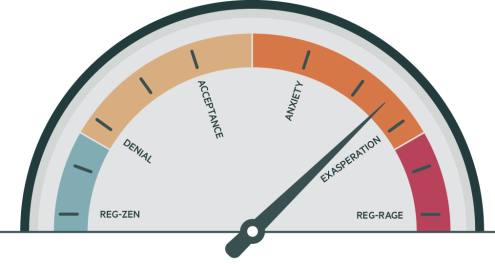Hastily agreed over a weekend, Credit Suisse’s $3.3bn merger with UBS has already seen significant fallout which will play out over a much longer timeframe.
The immediate losers are already formulating their strategy for clawing back losses, and investors for whom the implications are currently less clear are seeking legal advice on the escape routes available should their positions move against them.
The Swiss federal prosecutor has already opened an investigation into the merger, which will almost certainly uncover further ammunition for those looking to claw back or protect their investments.
The most high-profile of the immediate losers to date have been holders of the SFr16bn additional tier 1 (AT1) bonds that were immediately written to zero as part of the merger arrangements.
For the AT1 bonds to be written down where a bank is in trouble is perhaps not surprising. It is, after all, what they are there for. For the AT1 bonds to be written to zero in circumstances where Credit Suisse’s equity holders made a recovery (albeit not a full one) bucked market expectation and led both the Bank of England and the EU to confirm that it would not have happened under their regimes.
Holders of AT1 bonds have mobilised swiftly and are contemplating claims under Swiss law, under the terms of the bonds and, perhaps most interestingly, under bilateral investment treaties (BITs).
Depending on their terms, BITs (of which Switzerland is party to more than 100) allow individual investors from one nation state to seek compensation from another nation state (i.e. from the Swiss government rather than from Credit Suisse) where they have been treated unfairly.
Investors also have in their sights those that provided advice and made representations when entering into the bonds that, notwithstanding risk factors in the offering documents suggesting that the AT1s might be written down fully even where the equity was not, that was not how things would ever work in practice.
It has been predicted by some that a significant number of banks will not exist in their current form in 18–24 months’ time
Shareholders of both Credit Suisse and UBS have also expressed concern. Emergency powers were used by the Swiss authorities to allow the merger to go through without a shareholder vote on either side and Credit Suisse shareholders, in particular, are understandably asking how it all came to this.
They certainly did not waste the opportunity to show their displeasure at the bank’s annual general meeting on April 4, with one commenting: “I didn't bring my gun along today, don’t worry. I am wearing my red tie to represent that I and many other shareholders are seeing red.”
More pertinently, many are actively taking legal advice on potential claims against senior management of the type already seen in the US following the collapse of Silicon Valley Bank (SVB).
Credit Suisse’s failure has been widely attributed to a loss of confidence following a range of high-profile scandals, investigations and legal claims in recent years, culminating in an admission last month that it had identified “material weaknesses” in its internal controls over financial reporting. Meanwhile, it reported for 2022 its biggest annual loss since the 2008 financial crisis.
The increased scrutiny on Credit Suisse as a result of the merger will mean that more information on the internal workings of the bank will come to light and claims from aggrieved investors will almost certainly follow. The bank’s involvement in the Greensill collapse has already been the subject of a recent investigation by Finma, the Swiss Financial Market Supervisory Authority, which concluded that there had been serious deficiencies in Credit Suisse’s organisational structures through the affair.
The full Finma report remains confidential but will no doubt become public in due course, most likely through the disclosure process in litigation brought by investors to recover their losses from both direct investments in the Credit Suisse funds linked to Greensill, but also from derivative products issued to investors on the back of those funds.
The wider market ripples seem unlikely to be contained in Switzerland either. SVB and Signature Bank have already gone by the wayside and even giants such as Deutsche Bank have suffered significant share drops brought about by a lack of confidence in the market.
It has been predicted by some in the market that a significant number of banks will not exist in their current form in 18–24 months’ time, either through mergers, bail-ins or collapses. If those predictions turn out to be true, there will, once again, be losers and the size and form of litigation flowing from those instances will depend greatly on the approach of regulators to the issue.
While the Credit Suisse/UBS merger has been hailed by some as injecting some certainty into a banking market where confidence has been at a premium, the litany of legal and regulatory issues that have already emerged as a result mean that the turmoil is unlikely to end soon and the litigation is only just beginning.

Simon Fawell is a partner at law firm Signature Litigation







